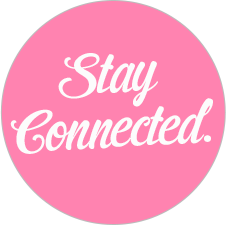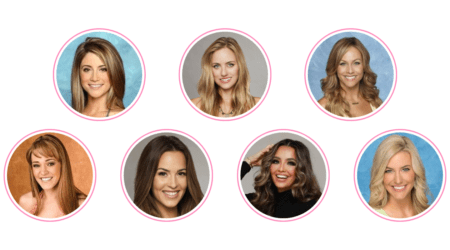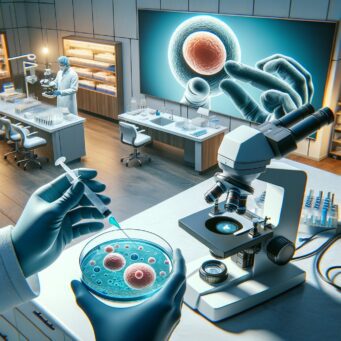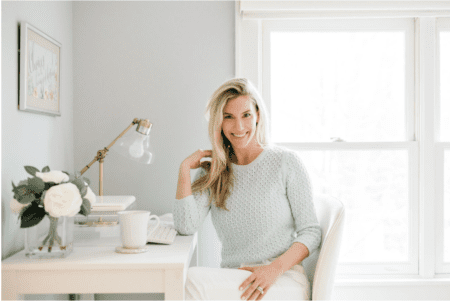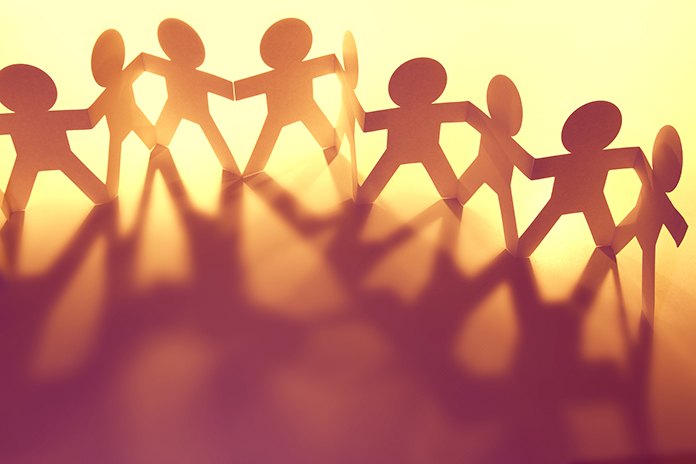
When my husband Noah and I set out to start a family just after I turned 30, we assumed it would be a straightforward process involving just the two of us, and maybe a decent bottle of wine. We’d been together for ten years at that point, married for two, and fairly settled in our careers. The natural next step was a baby.
So, we started “trying.” It was fun at first, until “trying” turned into “failing,” which quickly turned into “obsessing.” I bought books and ovulation test strips, and a basal body thermometer. I made Noah keep all electronics far away from his private parts and forbade hot tubs and tight boxer briefs. I meditated, checked my cervical mucous, and stood on my head after we did the deed. And each month when it proved ineffective, I cried.
We spent about a year-and-a-half doing this dance until we finally went to see a reproductive endocrinologist, Dr. Sam Najmabadi. He knew how to deal with frustrated, confused, anxious, and slightly crazed women like me. I showed him my monthly ovulation charts and the results of preliminary fertility tests we had done. We made a game plan.
I had several blood, ultrasound, and imaging tests done and quickly learned that I had Diminished Ovarian Reserve (DOR)—my egg reserve was low and my ovarian functioning was compromised. While part of me was relieved to have solved the mystery of our conception challenge, another part of me knew that this was not good.
Our best chance seemed to be IVF. For ten days Noah injected a cocktail of hormones into me several times a day. It was a nightmare. We practically had to board up the windows and lock the doors while waiting for the emotional tornado to pass. The day of our aspiration, the doctor retrieved five good-quality eggs, three of which fertilized beautifully the next day, but none of which became viable embryos. All of that effort and we had nothing to transfer.
We started ‘trying.’ It was fun at first, until ‘trying’ turned into ‘failing,’ which quickly turned into ‘obsessing.’How could we spend upwards of $15,000, inject so much medication into my body, and go through the emotional roller coaster of hope and despair, only to be no closer to having a baby? The months following our first unsuccessful IVF cycle were brutal.
For someone like me who has always dreamed of being a mother, who taught preschool and first grade and then became a psychotherapist primarily working with kids, not having a family was just not an option for me. Adoption was a possibility, but I really wanted to experience pregnancy and birth, and Noah preferred that we try for a genetic child, so we stayed focused on getting pregnant.
When we first entered the world of assisted reproduction, we knew nothing about it and no one who had experienced infertility. But the more open we were with our own difficulties, the more people we met who had or were having similar struggles. A very isolating experience became an opportunity to build a new community.
Early on, I began writing a blog called Don’t Count Your Eggs, and people wrote to me from all over the world, sharing their stories. I was amazed at the lengths people would go to make a baby. Noah and I decided to start making a documentary about our personal journey called One More Shot because we realized an honest portrayal of infertility could help other people like us.
As our efforts to have a child continued and we were still no closer to being parents, our documentary evolved from personal story to more of a quest. We interviewed people who had pursued and were successful with alternative approaches to having a family, because we needed to know that we did have more options. That helped us shift our perspective on what it meant to be a family.
When we met with the doctor for a post-IVF follow-up meeting and he recommended that we try to use donor eggs, I wasn’t completely opposed to it, but I also wasn’t ready to have the donor egg talk. The doctor said something like, “If you had won the lottery and IVF wasn’t as emotionally and physically exhausting as it was, I would recommend doing another round.” But he was clear that my chances at success were very slim.
Then, my younger sister offered to donate her eggs. My parents also offered to help us financially (and we got a grant from the BabyQuest Foundation). Suddenly our baby-making efforts became a family and extended-family affair. We had our proverbial village.
My sister, who is three years younger than me, was in her last year of residency when she offered to donate her eggs. Our doctor warned us about using an egg donor who was genetically related to me, but her fertility tests came back fine and for us, her eggs felt like the next best option. Noah and I were over-the-moon excited, but also had to wait for her to graduate from her program. If infertility teaches one major life lesson, it is the value of patience.
We were no longer going to focus on my getting pregnant; we just wanted to become parents and get out of the exhausting lifestyle of a couple dealing with infertility.My sister was incredibly gracious throughout the entire process. She did the injections herself and never complained once. The loss I felt having to give up my direct genetic link to our potential child was filled by the love I felt for and from my sister who was willing to do this for me. While we did get to our first transfer day, ultimately, none of the three embryos we implanted took, nor did the single frozen embryo transfer we did the following month.
Noah and I were both devastated. We were emotionally, physically, and financially depleted. But we didn’t give up; we readjusted our goal. We were no longer going to focus on my getting pregnant; we just wanted to become parents and get out of the exhausting lifestyle of a couple dealing with infertility.
We weighed our options and the cost and time commitment of each, and landed on our next baby-making endeavor: embryo donation. I didn’t actually set out to pursue embryo donation; it just kind of happened. I was researching frozen egg banks when I came across a clinic in Seattle, Noah’s hometown, that had donated embryos. I asked if they had any that happened to be of my ethnic mix—half-Japanese—and they did. They were created from an egg donor and the husband of an infertile couple and frozen the same year Noah and I started our journey to parenthood. Something just felt right.
But the clinic reserved their donated embryos in what the coordinator referred to as “the pantry,” for patients of that clinic only. I had some convincing to do both—with her and with Noah. With the coordinator, I shared our story. She said because we had been such “failures” in reproduction it seemed like we could qualify. Never in my life have I been so happy to be a failure.
With Noah, it just took time. I didn’t want to convince him; I wanted it to feel right for him, too. I had already let go of my desire for a genetic link to our potential child years before, but Noah had always assumed his contribution would be preserved.
We put the two embryos “on hold” and waited about six months before moving forward. In that time, we talked about what it all meant. We thought about how a child might feel conceived in this way and we talked about our readjusted goals: to be parents. With a little time and a lot of conversation, Noah was on board. It was a more affordable option than some (about $7,000; with medication and travel about $10,000). It would also allow me the chance to carry—and allow us the best possibility for—a healthy child.
In July 2014, we did a donated frozen embryo transfer and lo and behold, it worked. We made it through a touch-and-go pregnancy and a slightly traumatic birth, but now we have the most amazing two-year-old we could ever imagine. She is 100% the baby that was meant to be ours.
Noah and I needed a bit more than a decent bottle of wine and one magical night to make a baby. We learned a lot of important life lessons along the way and are so grateful to everyone in our “village” involved in our baby-making odyssey. We can now proudly tell our little girl that we wanted her so badly that people we knew and even strangers were inspired to help us become a family. Would I do it all over again to end up with the baby girl we have? Absolutely.
Contributor
Maya Grobel
Maya Grobel is a licensed clinical social worker (LCSW) and psychotherapist in Los Angeles who specializes in supporting those struggling to conceive. Her blog, Don’t Count Your Eggs, follows her five-year path to parenthood that finally ended with the birth of her daughter in 2015. One More Shot, a feature length film that Maya and her TV-producer husband, Noah, made documenting their journey to parenthood is available on iTunes, Amazon, Vimeo on Demand, and Netflix starting on January 15, 2018.

Listen to stories, share your own, and get feedback from the community.










